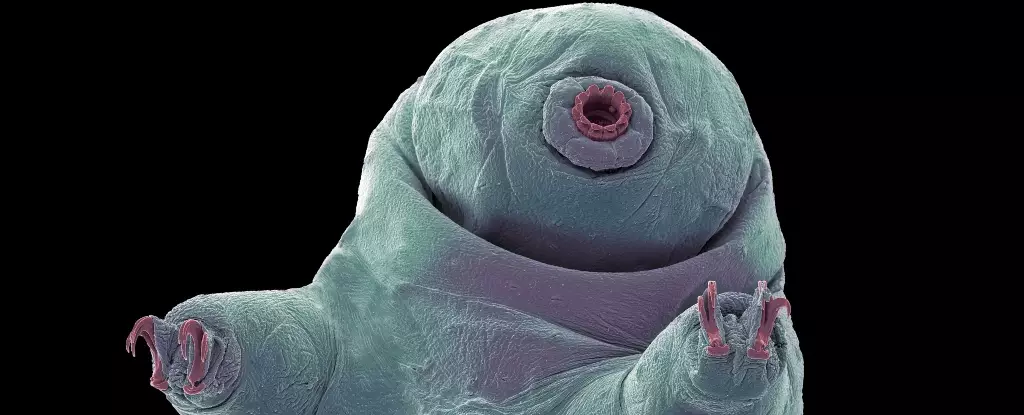The 2025 Lunar and Planetary Science Conference held in The Woodlands, Texas, was more than just a gathering of space enthusiasts; it was an incubator for transformative ideas regarding humanity’s relationship with the cosmos. Spanning from March 10 to March 14, this event showcased groundbreaking proposals that seek to address one of humanity’s most pressing challenges: survival in the vast, inhospitable realms of space and on other celestial bodies. Among the myriad of scientific endeavors presented, one in particular stood out—the research into tardigrades, affectionately known as water bears, and their potential role in shaping our understanding of life and survival beyond Earth.
Tardigrades: Nature’s Extremophiles
What makes tardigrades (Tardigrada) so intriguing is their astonishing resilience. Found in the most extreme environments—from the frigid depths of the Antarctic to the scorching hot springs of Japan—these tiny organisms can survive conditions that would obliterate most life forms. The research spearheaded by Isadora Arantes, a NASA ambassador and astronaut candidate, along with Geancarlo Zanatta from the Federal University of Rio Grande do Sul, has brought tardigrades to the forefront of astrobiological inquiry. Withstanding temperatures from absolute zero to boiling points, immense pressure, and intense radiation exposure, their survival mechanisms are an open book to understanding potential life forms that may thrive on planets like Mars, or the icy moons of Europa and Titan.
Cracking the Code of Resilience: Understanding Dsup
At the heart of this fascinating study is the pivotal protein Dsup (Damage Suppressor). This protein is a game-changer, functioning as a protective shield for the DNA of tardigrades when exposed to varying degrees of stress, particularly from radiation. Arantes and Zanatta utilized advanced molecular dynamics simulations to delve into how Dsup operates, revealing its ability to minimize double-strand breaks in the genetic material. This discovery implies that the genetic mechanisms employed by tardigrades could pave the way for biotechnological breakthroughs aimed at enhancing human resilience against environmental stressors, particularly in space.
Furthermore, their investigation didn’t stop at Dsup. They explored heat shock proteins (HSPs) and antioxidant enzymes, both of which are crucial for maintaining protein integrity amid fluctuating thermal environments and oxidative stress. Understanding how these proteins function provides researchers with potential pathways to engineering crops and perhaps even human cells to become hardier in extreme conditions. Imagine crops that flourish in drought and extreme temperatures, or human cells that can resist the detrimental impacts of cosmic radiation. The implications stretch far beyond mere survival; they could revolutionize agriculture and medicine back on Earth.
Implications for Astrobiology and Extraterrestrial Life
Setting a lens on astrobiology, the study of tardigrades exemplifies the type of innovations needed to understand life’s resilience on other planets. The research posits that the genetic fortitude displayed by these micro-animals parallels what potential life forms might exhibit in extreme extraterrestrial locales. With Mars exhibiting radiation-rich environments and Europa and Titan possessing subsurface oceans, these findings provide a compelling narrative in the search for extraterrestrial life. The protein stability observed in the extreme conditions akin to those found in Titan’s subsurface locales suggests that, similar to tardigrades, other forms of life may adapt in unforeseen ways to survive.
A Future Grounded in Exploration and Biotechnology
Arantes and Zanatta’s work extends beyond the nebulous realms of space exploration; it intertwines with real-world applications on Earth. As we bridge the gap between astrobiology and biotechnology, the lessons learned from tardigrades’ hardiness can be harnessed to tackle contemporary challenges such as climate change or food security. As the researchers aptly highlight, their findings illuminate the broader relevance of studying extremophiles—proving invaluable in our quest not just to explore the cosmos, but to foster resilience on our own home planet.
The road ahead appears dazzlingly bright with possibilities, but it also mandates an interdisciplinary approach. Further research, armed with computational and experimental methodologies blended seamlessly, is essential in unlocking the myriad survival strategies exhibited by extremophiles. Such endeavors may ultimately define humanity’s capability to live not just among the stars, but to thrive as adaptable beings in the ever-expanding universe.

